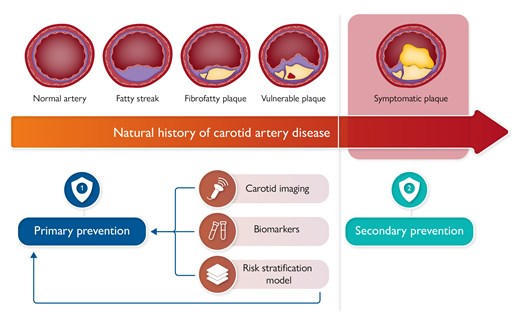-
Views
-
Cite
Cite
Luca Saba, Riccardo Cau, Rocco Vergallo, M Eline Kooi, Daniel Staub, Gavino Faa, Terenzio Congiu, George Ntaios, Bruce A Wasserman, John Benson, Valentina Nardi, Rika Kawakami, Giuseppe Lanzino, Renu Virmani, Peter Libby, Carotid artery atherosclerosis: mechanisms of instability and clinical implications, European Heart Journal, Volume 46, Issue 10, 7 March 2025, Pages 904–921, https://doi.org/10.1093/eurheartj/ehae933
Close - Share Icon Share
Abstract
Cardiovascular disease remains a prominent cause of disability and premature death worldwide. Within this spectrum, carotid artery atherosclerosis is a complex and multifaceted condition, and a prominent precursor of acute ischaemic stroke and other cardiovascular events. The intricate interplay among inflammation, oxidative stress, endothelial dysfunction, lipid metabolism, and immune responses participates in the development of lesions, leading to luminal stenosis and potential plaque instability. Even non-stenotic plaques can precipitate a sudden cerebrovascular event, regardless of the degree of luminal encroachment. In this context, carotid imaging modalities have proved their efficacy in providing in vivo characterization of plaque features, contributing substantially to patient risk stratification and clinical management. This review emphasizes the importance of identifying high-risk individuals by use of current imaging modalities, biomarkers, and risk stratification tools. Such approaches inform early intervention and the implementation of personalized therapeutic strategies, ultimately enhancing patient outcomes in the realm of cardiovascular disease management.

The progression of carotid atherosclerotic plaque, from a normal carotid wall to symptomatic plaque. Non-invasive imaging modalities, circulating biomarkers, and risk stratification instruments may alter this natural history.





